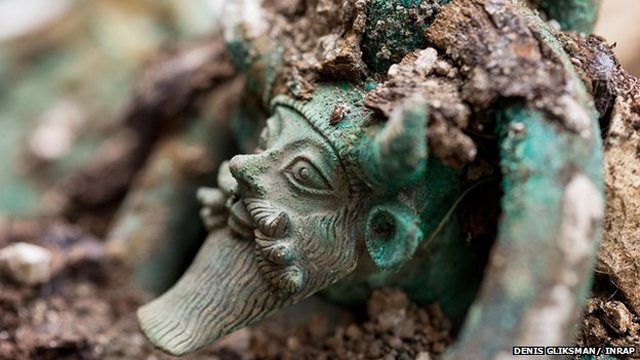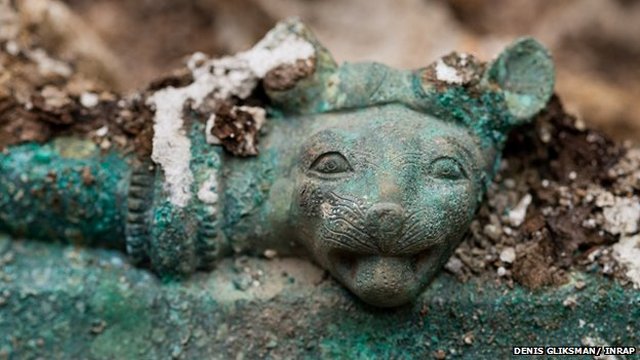Mystery Of The Lavau Celtic Prince And The Beautiful Ancient Artifacts Hidden In His 2,500-Year-Old Tomb
AncientPages.com - Some years ago, archaeologists discovered an exceptional tomb of a Celtic Prince. The 2,500-year tomb was unearthed on the outskirts of Lavau in France’s Champagne region.
Inside the tomb researchers from National Institute of Preventive Archaeology (INRAP) found remarkable ancient Greek and Etruscan artifacts, but this was not the end of the story. It soon became clear that the tomb of the Lavau Celtic Prince had many hidden secrets.
One Of The Greatest Archaeological Discoveries In France
The French state ordered a more detailed exploration of the area and many more priceless artifacts were unearthed in the vicinity. Soon, archaeologists found magnificent artifacts from the 5th century B.C., including a bronze cauldron ornamented with the head of the god Dionysus.
The skeleton of the Celtic prince was also unearthed. He was laid out on his chariot, still wearing beautiful jewelry. He who was still remains a mystery, but this particular discovery is considered one of the most important archaeological discovery made in France in recent decades - comparable to the 1953's discovery of grave belonging to the so-called 'Lady of Vix'.
Artifacts Produced By Skilled Ancient Craftsmen
Examination of the Lavau Celtic Prince’s tomb has been going on for two years now, ever since it was unearthed in 2015. The artifacts have been analyzed in a laboratory and the first results are reaching the public. Using sing X-ray radiography and tomography as well as 3D photography, scientists hope the artifacts can shed light on Iron Age European trade and unravel the identity of the Lavau Celtic Prince.
One of the goals is to understand the influences from different cultures in the way the ancient objects were decorated. For instance, a large jar used to pour wine is made up of Greek-style ceramic and decorated with golden Etruscan motifs and silver Celtic designs. Hopefully, 3D photography and chemical analyses can shed more light on the origin of the ancient artifacts.
See also:
Unique 2,500-Year-Old Celtic Jewelry – Oldest Iron Age Gold Treasure Ever Found In Britain
Remarkable Le Catillon II Hoard – World’s Largest Collection Of Celtic Coins And Jewellery
Does Celtic Art Have Links With Iron Age Art Of The Eurasian Steppes?
Scientists have so far been able to confirm that the artifacts discovered in the tom of the Celtic prince were manufactured by various ancient cultures. X-ray radiography shows that the belt worn by the prince is decorated with threads of silver, assembled together to form Celtic motifs. This is a unique object, as none similar have ever been recovered elsewhere before.
Furthermore, an analysis of the metals in the bronze cauldron - one of the most elaborate artifacts recovered from the grave - suggests that the people who created it perfectly mastered smelting and engraving techniques.
Cultural and economic interactions were taking place between the Celtic and Mediterranean worlds at the time the Lavau Celtic Prince was alive.
It has also been established beyond doubt that the person buried in the grave was male and not a female as some previously suggested. Researchers plan to continue the examination of the tombs, skeleton and artifacts until 2019, to try and find out more about the prince's identity and to learn more about the origins of all the objects he had taken with him in the afterlife.
AncientPages.com
Expand for references
More From Ancient Pages
-
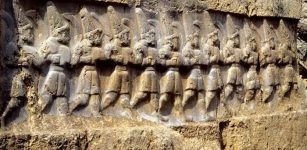 Secret Ancient Lunar Calendar May Be Hidden At A Hittite Sanctuary
Archaeology | Jul 3, 2019
Secret Ancient Lunar Calendar May Be Hidden At A Hittite Sanctuary
Archaeology | Jul 3, 2019 -
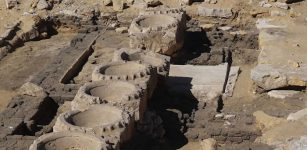 4,500-Year-Old Lost ‘Sun Temple’ Dedicated To God Ra Unearthed In Abu Gorab Necropolis
Archaeology | Aug 4, 2022
4,500-Year-Old Lost ‘Sun Temple’ Dedicated To God Ra Unearthed In Abu Gorab Necropolis
Archaeology | Aug 4, 2022 -
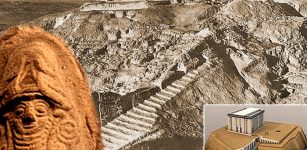 Anu: Supreme Ruler Of The Heavenly Abode In Sumerian Pantheon Of Gods
Featured Stories | Jun 7, 2018
Anu: Supreme Ruler Of The Heavenly Abode In Sumerian Pantheon Of Gods
Featured Stories | Jun 7, 2018 -
 Rare Discovery: 530 Knuckle Bones ‘Astragali’ For Gaming And Divination Unearthed In Ancient City Of Maresha
Archaeology | Aug 16, 2022
Rare Discovery: 530 Knuckle Bones ‘Astragali’ For Gaming And Divination Unearthed In Ancient City Of Maresha
Archaeology | Aug 16, 2022 -
 Christmas – One Of Most Celebrated Holidays In Christian Calendar
Ancient Traditions And Customs | Dec 24, 2018
Christmas – One Of Most Celebrated Holidays In Christian Calendar
Ancient Traditions And Customs | Dec 24, 2018 -
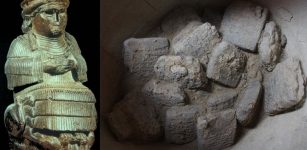 Sensational Find: Huge Cuneiform Archive Of Mysterious Ancient Clay Tablets Discovered In Iraq
Archaeology | Oct 26, 2017
Sensational Find: Huge Cuneiform Archive Of Mysterious Ancient Clay Tablets Discovered In Iraq
Archaeology | Oct 26, 2017 -
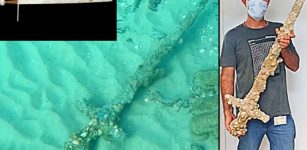 Medieval Sword Found In The Sea Off The Carmel Coast Was Probably Used In Combat 800 Years Ago
News | Aug 4, 2023
Medieval Sword Found In The Sea Off The Carmel Coast Was Probably Used In Combat 800 Years Ago
News | Aug 4, 2023 -
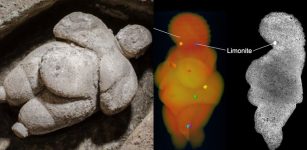 Mystery Of The 30,000-Year-Old Venus Of Willendorf Solved?
Archaeology | Feb 28, 2022
Mystery Of The 30,000-Year-Old Venus Of Willendorf Solved?
Archaeology | Feb 28, 2022 -
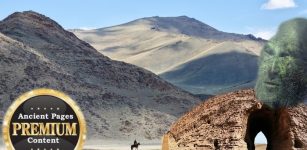 Controversial Unexplained Ancient Mystery In Mongolia – Discovery Of Remarkable Secrets Hidden In Artificial Cave – Part 1
Featured Stories | May 1, 2018
Controversial Unexplained Ancient Mystery In Mongolia – Discovery Of Remarkable Secrets Hidden In Artificial Cave – Part 1
Featured Stories | May 1, 2018 -
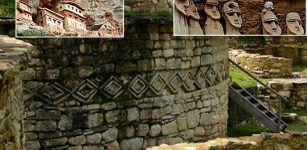 Mysterious Chachapoyas ‘Warriors Of The Clouds’ And Their Impressive Structures
Civilizations | Nov 4, 2020
Mysterious Chachapoyas ‘Warriors Of The Clouds’ And Their Impressive Structures
Civilizations | Nov 4, 2020 -
 Yggdrasil: Eternal And Sacred Tree Of Life In Norse Mythology
Featured Stories | Sep 22, 2016
Yggdrasil: Eternal And Sacred Tree Of Life In Norse Mythology
Featured Stories | Sep 22, 2016 -
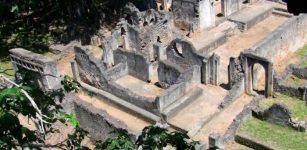 A Researcher’s Life’s Work Uncovers First Ancient DNA From Swahili Civilization
Archaeology | Apr 2, 2023
A Researcher’s Life’s Work Uncovers First Ancient DNA From Swahili Civilization
Archaeology | Apr 2, 2023 -
 16 Dead Sea Scrolls Fragments Are Forgeries – U.S. Bible Museum Says
Artifacts | Mar 15, 2020
16 Dead Sea Scrolls Fragments Are Forgeries – U.S. Bible Museum Says
Artifacts | Mar 15, 2020 -
 Slaves In The Aztec Empire Had Much Better Rights Than In Any Other Ancient Society
Ancient History Facts | Jul 6, 2016
Slaves In The Aztec Empire Had Much Better Rights Than In Any Other Ancient Society
Ancient History Facts | Jul 6, 2016 -
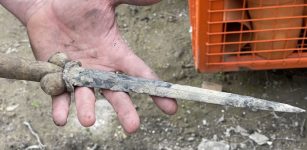 Medieval Bollock Dagger – Also Known As Kidney Dagger Discovered In Belgium
Archaeology | Mar 30, 2022
Medieval Bollock Dagger – Also Known As Kidney Dagger Discovered In Belgium
Archaeology | Mar 30, 2022 -
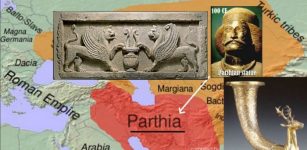 Next Discovery In Tepe Ashraf, Isfahan – Archaeologists May Have Stumbled Upon Ancient Necropolis
Archaeology | Aug 16, 2020
Next Discovery In Tepe Ashraf, Isfahan – Archaeologists May Have Stumbled Upon Ancient Necropolis
Archaeology | Aug 16, 2020 -
 Bizarre Towering Pillars Of Externsteine: Myths, Legends And Sacred Rituals From Times Long Gone
Civilizations | Jan 7, 2017
Bizarre Towering Pillars Of Externsteine: Myths, Legends And Sacred Rituals From Times Long Gone
Civilizations | Jan 7, 2017 -
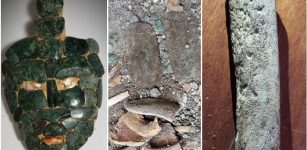 Unique Ancient Treasures Found In Maya King’s Tomb At Chochkitam, Guatemala
Archaeology | Feb 2, 2024
Unique Ancient Treasures Found In Maya King’s Tomb At Chochkitam, Guatemala
Archaeology | Feb 2, 2024 -
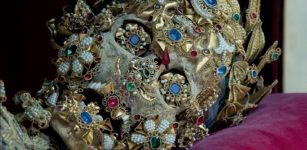 Secret Catacombs With Incredible Ancient Skeletons Covered In Priceless Jewelry
Featured Stories | Nov 20, 2018
Secret Catacombs With Incredible Ancient Skeletons Covered In Priceless Jewelry
Featured Stories | Nov 20, 2018 -
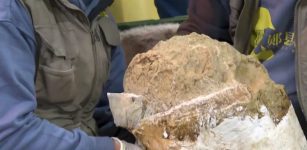 Fossilized Million-Year-Old Human Skull Of Yunxian Man Excavated In China
Archaeology | Jan 10, 2023
Fossilized Million-Year-Old Human Skull Of Yunxian Man Excavated In China
Archaeology | Jan 10, 2023



